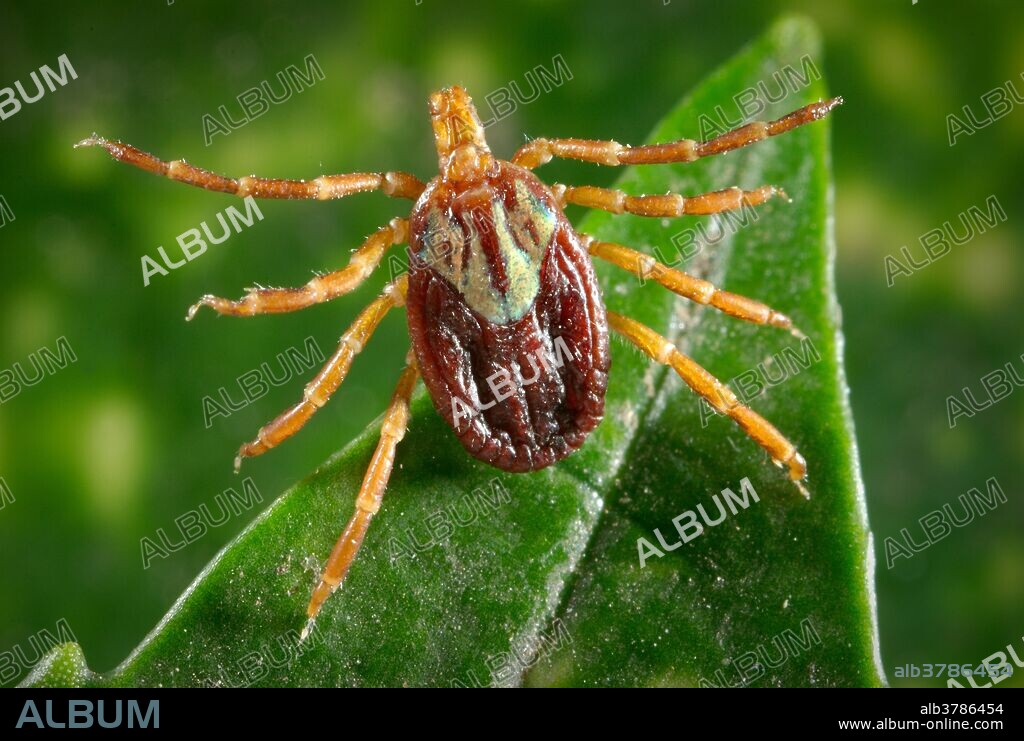alb3786454
Gulf Coast Tick

|
Añadir a otro lightbox |
|
Añadir a otro lightbox |



¿Ya tienes cuenta? Iniciar sesión
¿No tienes cuenta? Regístrate
Compra esta imagen.
Selecciona el uso:

Título:
Gulf Coast Tick
Descripción:
Ver traducción automática
Dorsal view of a female Gulf Coast tick, Amblyomma maculatum. This tick specie is a known vector for Rickettsial organisms, Rickettsia parkeri, and Ehrlichia ruminantium, formerly Cowdria ruminantium. R. parkeri is a member of the spotted fever group of rickettsial diseases affecting humans, while E. ruminantium causes "heartwater disease", an infectious, noncontagious, tick-borne disease of domestic and wild ruminants, including cattle, sheep, goats, antelope, and buffalo. Note the considerably-smaller scutum, or "shield" covering only a small region of its dorsal abdomen, unlike its male counterpart, an example of which can be seen in PHIL 10877 (replace with PR #) which sports a scutum covering its entire dorsal abdomen. The smaller scutum in the female enables its abdomen to expand considerably, leading to an engorged appearance after ingesting its host blood meal. Ticks possess four pairs of legs, placing it in the class of Arachnida, as its cousins, the spiders and scorpions.
Crédito:
Album / Science Source / James Gathany/CDC
Autorizaciones:
Modelo: No - Propiedad: No
¿Preguntas relacionadas con los derechos?
¿Preguntas relacionadas con los derechos?
Tamaño imagen:
3880 x 2608 px | 29.0 MB
Tamaño impresión:
32.9 x 22.1 cm | 12.9 x 8.7 in (300 dpi)
 Pinterest
Pinterest Twitter
Twitter Facebook
Facebook Copiar enlace
Copiar enlace Email
Email
